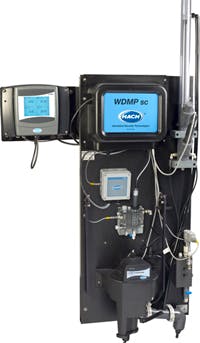How can I verify water quality in the distribution system without using reagents?
Ever think to measure chlorine, pH, conductivity, and turbidity as your drinking water exits the treatment plant or in key areas within your distribution system to determine water quality?
Why measure chlorine? Verify adequate chlorine residual — use either the reliable, proven DPD method (CL17 analyzer) or the reagentless method (CLF10 analyzer). You want enough chlorine to ensure against microorganism contamination; yet too much chlorine could result in the formation of DBPs.
Why measure turbidity? Possibly verify the presence of corrosion products and biogrowth in the distribution system. Spikes in turbidity could be found due to roadwork or other interruptions.
Why measure pH and conductivity? Get information about the acid/base nature and total ionic concentration of your water. This parameter information could be used in a hydraulic mapping study.
Even add organics capabilities with UVAS 254 reagentless probe — Hach can mount an additional flow thru cell for probe installation.
For more information about distribution monitoring, please click here. http://hachhst.com/applications/monitoring-water-quality-and-security-in-distribution-system/


